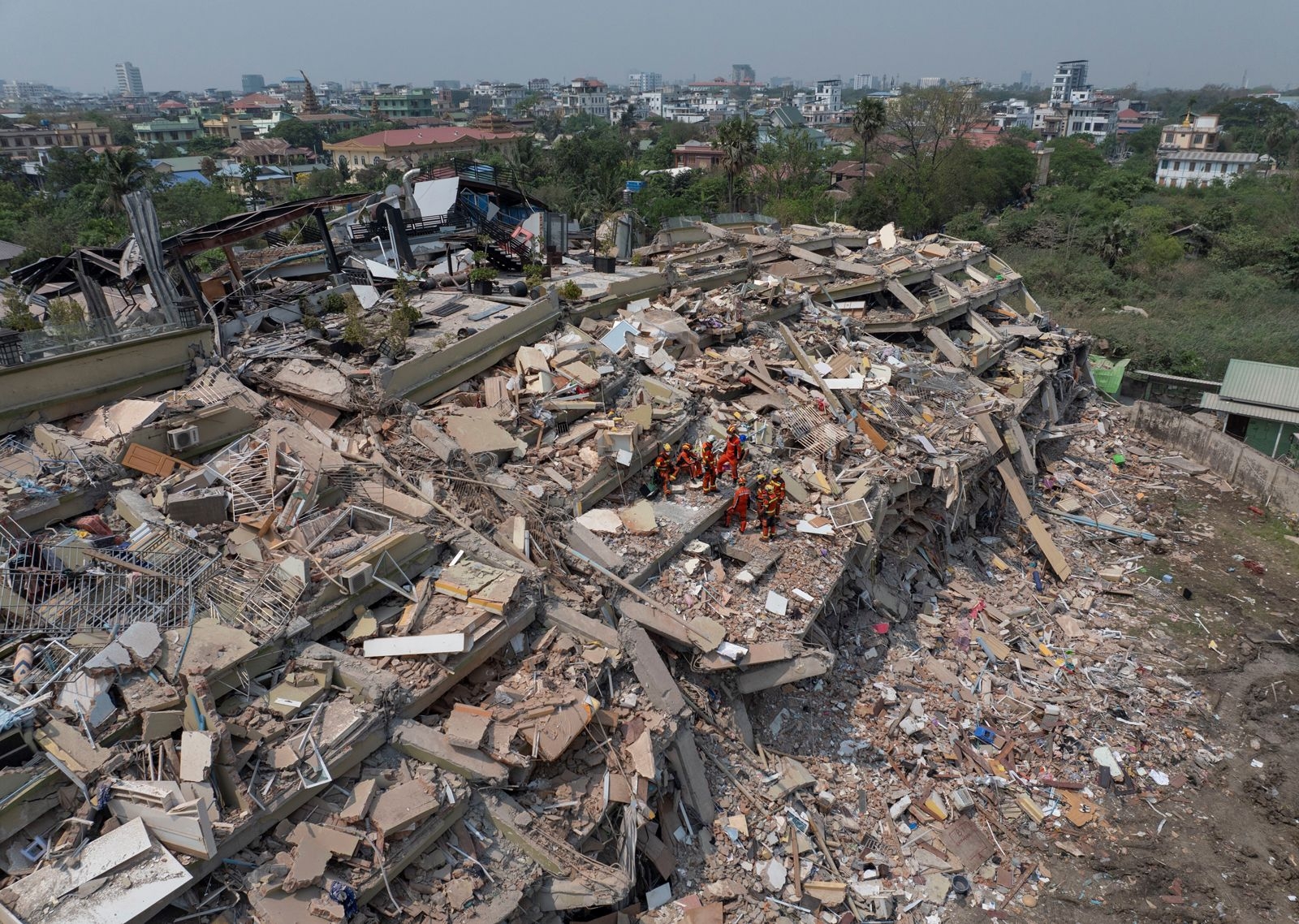
On March 28, 2025, at 12:50 PM local time, Myanmar experienced one of its most devastating natural disasters in recent history—a magnitude 7.7 earthquake centered near Mandalay. This powerful quake, the strongest since 1912, caused widespread destruction across central Myanmar and neighboring countries.
📍 Earthquake Overview
Magnitude: 7.7
Epicenter: Near Mandalay, Sagaing Region
Depth: Approximately 10 km
Aftershocks: A significant aftershock of magnitude 6.7 occurred 12 minutes later .Encyclopedia Britannica
The earthquake’s tremors were felt as far as Bangkok, Thailand, and Ho Chi Minh City, Vietnam, causing additional damage and casualties in those regions .
🧍♂️ Human Impact
Fatalities: Over 3,700 people
Injuries: More than 5,000 individuals
Missing: At least 214 people
Displacement: Thousands rendered homelessThe Irish Sun+8The Washington Post+8Wikipedia+8Reuters+6Wikipedia+6The Washington Post+6ADRA International+2Wikipedia+2Wikipedia+2
The earthquake caused extensive damage to infrastructure, including the collapse of buildings, bridges, and religious sites. Notably, more than 8,300 monasteries, nunneries, and pagodas were destroyed .Wikipedia
🏥 Healthcare and Humanitarian Challenges
Myanmar’s healthcare system, already weakened by ongoing conflict and political instability, struggled to cope with the disaster. Many healthcare professionals had fled or refused to work for the regime, leading to a significant shortage of medical personnel. This, coupled with restrictions on aid and communications, severely hindered the delivery of humanitarian assistance .
Survivors faced dire conditions, with limited access to medical care, clean water, and shelter. The approaching monsoon season further exacerbated the situation, increasing the risk of disease outbreaks among displaced populations .
🌐 International Aid and Support
In response to the catastrophe, several countries and organizations pledged support for Myanmar’s reconstruction efforts:
China: President Xi Jinping pledged support for Myanmar’s reconstruction efforts after the nation experienced its deadliest earthquake in recent years .
United Nations: Allocated $5 million from its emergency fund to support relief operations .
South Korea: Pledged $2 million in initial humanitarian aid through international organizations .
Ireland: Announced €6 million in humanitarian aid to assist Myanmar, with funds allocated to various international and local organizations .ReutersThe Global Fund+2Lowy Institute+2Wikipedia+2Reuters+1Wikipedia+1The Irish Sun
Despite these efforts, the delivery of aid has been hampered by the country’s ongoing civil conflict and restrictions imposed by the ruling junta.
⚠️ Ongoing Concerns
The earthquake has compounded Myanmar’s existing humanitarian crisis, with nearly 20 million people already in need of urgent assistance due to conflict and displacement . The international community continues to urge Myanmar’s authorities to facilitate unrestricted access for humanitarian aid to ensure that relief reaches all affected populations.
